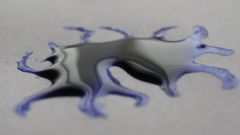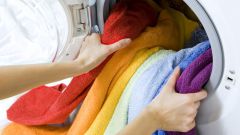You will need
- - a cotton swab;
- - methylated or ammonia.
Instruction
1
Before you clean the stains from the concealerand you need to determine what species it belongs to. As they say, you need to know the enemy in the face. Our industry produces the correction fluid of three types: water-based, alcohol-based and oil-based (this is the most resistant of all proofreaders).
2
You landed a spot correctorohms. What to do? Calm down, take up the ill-fated jar and read what it consists of. If concealer is water based, it is enough to soak soiled thing for a while in cold water, then wash and rinse thoroughly.
3
If concealer alcohol-or oil-based, the case is more complicated. First, carefully clean off the bulk of the dried correctorand tissue. Put the product wrong side out, after putting under the front side of a clean cloth.
4
Soak the area around the stain with water so that the stain does not spread and did not work halo around it. All the stains cleaned from the edges to the center, white cloth, cotton ball or cotton swabs dipped in solvent. If the corrector was the alcohol, as the solvent, use a special thinner for a proofreaderand. If the corrector was oil-based – take white spirit, methylated or ammonia.
5
In order not to spoil a thing, test the solvent on the internal seams of the product. So you will understand - suitable for fabric such kind of home dry-cleaning or not. If everything is in order – the dye is not washed off, the fabric is not deformed, gently begin to withdraw the stain is soaked in the solvent with a cotton swab or a piece of white cloth. The extent of pollution change the tampons. After cleaning, the thing should be thoroughly washed.
Note
In no case do not wash the product before cleaning. The effect of water to powder can only complicate the task and to reduce all the chances of saving his beloved things. The faster you get down to the removal of stains, the greater the likelihood that it will disappear without a trace.
Useful advice
Proofreaders water-based I'm afraid of low temperatures, as solvent use water. Proofreaders alcohol-based low temperatures are not afraid, as the solvent they use a special solvent based on alcohol. Concealer oil-based not afraid of low temperatures and the most persistent of all types, because it combines all the advantages of the previous one.



